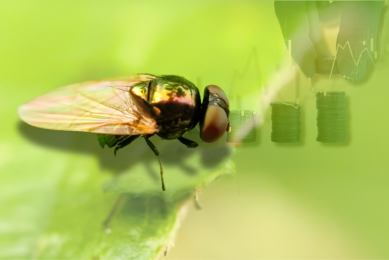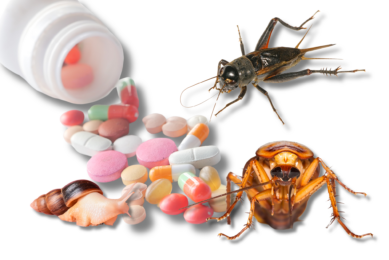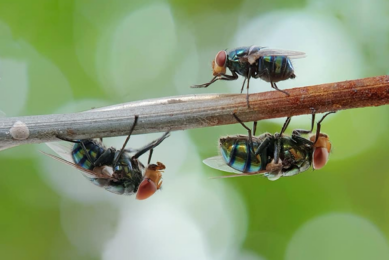The path to a half million metric tons of insect protein
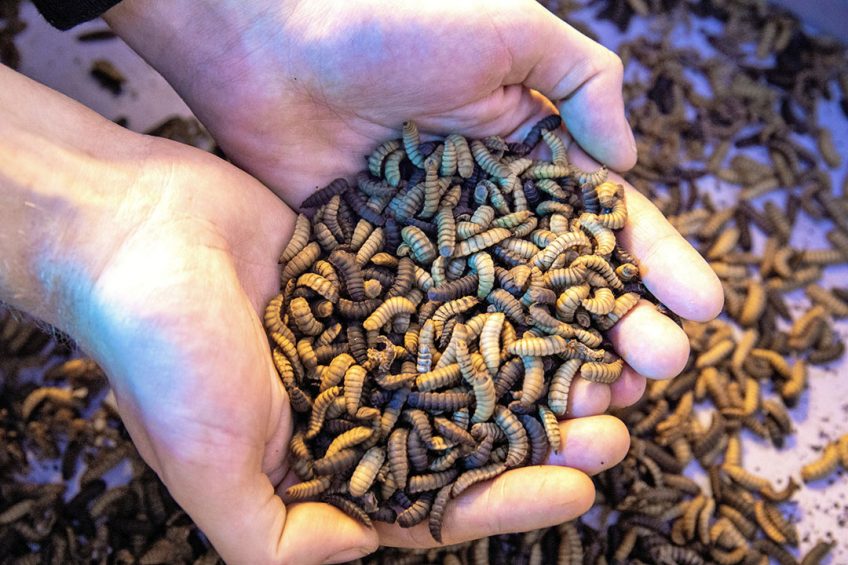
Insect protein is one of the new, promising animal feed proteins, due to its nutritional, functional and environmental benefits. However, high costs, limited production capacity and legislation remain the main limiting factors for growth.
In a new report ‘No longer crawling: Insect protein to come of age in 2020s’, Rabobank outlines the path to increase scale for the insect industry.
3 stages of scaling
Rabobank expects a global market potential of up to 500,000 metric tons by 2030 for insect protein as animal feed ingredient. Current volumes of insect protein are estimated around 10,000 metric tons. To outline this scaling path the company constructed a model that consists of 3 stages, a scale-up phase, a wider-use period and a maturity phase. (see figure 1). In the scale-up phase Rabobank expects the prices range from € 3,500 to € 5,500. In the second phase, the prices are expected to drop by € 1,000 per metric ton. When the sector reaches maturity in the third phase, prices are expected to drop another € 1,000 per metric ton.
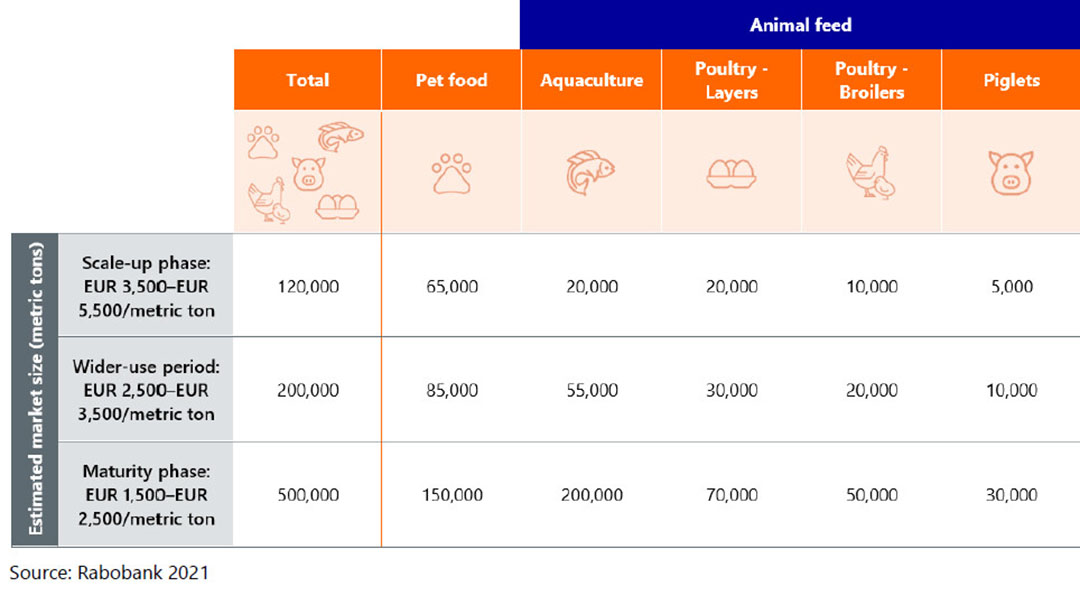
Pet food market: Important role in first 2 phases.
The pet food market will play the biggest role in the first part of the path to scaling, since it’s currently the largest market for insect protein. Its forecasted that insect protein as a pet food ingredient will reach 150,000 metric tons by 2030. Pet food with insect protein as ingredient is placed in the premium segment. This segment is set to grow. Pet owners are willing to pay higher prices for specialty food. In the scale up phase, prices will remain high and therefore developed countries will drive the demand for insect-based pet food. Also in the second phase of scaling its expected that the number of pet food companies that will use insect protein in formulation will grow. However, according to Rabobank, when prices will go down in the maturity phase, aquafeed will be become the biggest market for insect protein, as pet food is a smaller industry.
Aquafeed market: Insect protein used alongside fish-and soybean meal
Rabobank expects that the aquafeed market will cover 40% of the insect protein market by 2030, a global market potential of 200,000 metric tons. Currently only a few tons of insects proteins are used in aquafeed, since the nutritional qualities don’t compete with the current price level of insect meal.
Positive features of insect protein – beyond nutritional
Rabobank sees a potential market in North America and Europe, as there is a need to reduce both fishmeal and soybean meal for sustainability reasons, and insect protein is a potential alternative. This would be the first small phase in scaling up. The second phase will be based on the functional properties of insects in aquafeed. Research shows that the inclusion of insect proteins has some positive features beyond nutritional value, such as palatability, improved gut health and antioxidant function. Although more research evidence will be needed to allow a profitable scale-up. In this phase of scaling Rabobank expects that insect protein will be used alongside fishmeal and soybean meal in small inclusion rates.
Even in the last phase of scaling and beyond 2030 Rabobank don’t expect insect protein to replace fishmeal or soybeal mean, although the cost level of insect protein will be more comparable with fishmeal. Rabobank sees insect protein and oil to become new raw material categories, which will be combined with fishmeal or soybean meal to create better performing and more sustainable aquatic feeds.
Poultry and pigs
Rabobank estimates a potential of 70,000 metric tons of insect protein as layer hen feed. Potential in broiler feed will be limited to 50,000 metric tons. The large potential in the layer hen feed market is due to the fact that the egg market gives space to market insect-fed eggs as a concept. The market potential for broilers is limited, due to the high price compared to soybean meal. For pig feed Rabobank expects a small market share of 30,000 metric tons. Due to specific swine market dynamics and the higher price compared to soy, Rabobank considers pig feed as the smallest market for insect protein.
Turning point for insect industry
Rabobank believes that after reaching half a million metric tons it will get easier for the industry to expand supply. After reaching the half million, it would take much less time to double production and exceed one million metric tons. The speed of growth will depend on R&D, legislation changes, capital inflow and marketing.
| Challenges that hinder scaling up |
|---|
Challenge 1: lack of scale
|




